Give Your Lawn a Taste of the Wild
I’m an Englishman, so a perfectly manicured lawn is set deep within my gardening genes. Rainfall levels and temperate summers of the British Isles allow the grass to mature to a perfect green verdure, making it an ideal climate for lush green lawns. But the days of hearing lawn mowers working hard in suburban gardens on Sunday mornings are almost past. As leisure time becomes more valuable, less time is spent tending the garden.
What happens if we don’t cut the lawn? Will it, in time, revert to a wildflower meadow, or will it just become an unkempt mess? Though wildflower meadows are more in line with gardeners’ growing environmental concerns and urban dwellers longing for a piece of rural life, are they practical in the smaller garden?
Perhaps the solution is to take the middle road, to mow just enough to keep the lawn tidy and usable, while allowing for the environmental benefits of letting species other than grass creep in. This, in garden designer speak, is called creating a meadow lawn.
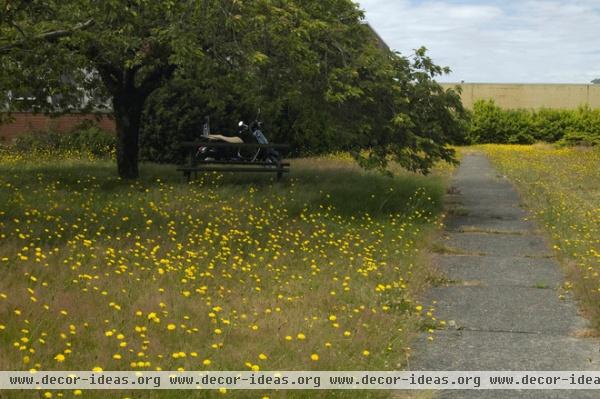
Unlike a wildflower meadow, an area of land that is completely or primarily covered with semi-rough grass that will tolerate light foot traffic, a meadow lawn is an area created from an existing traditionally maintained lawn. The lawn is allowed to grow naturally but controlled by irregular mowing and the removal of any unwanted plants. Meadow lawns can give gardeners all the benefits of the larger wildflower meadow but on a smaller, more manageable scale.
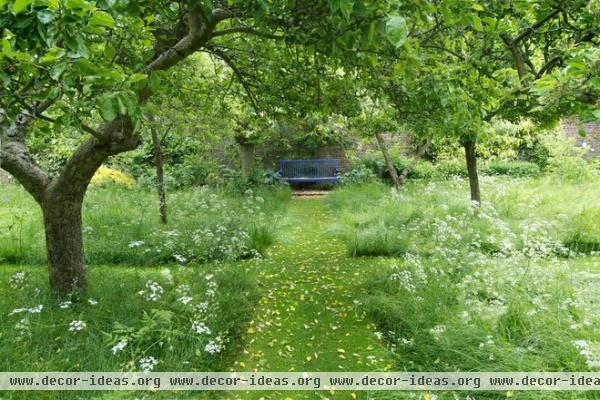
The treatment of the grass in this orchard is a great example of how changing mowing patterns can create a meadow lawn. The paths are still closely cut while the squares under the trees have converted to meadow, with an abundance of flowering grasses and the lacy flowers of cow parsley (Anthriscus sylvestris).
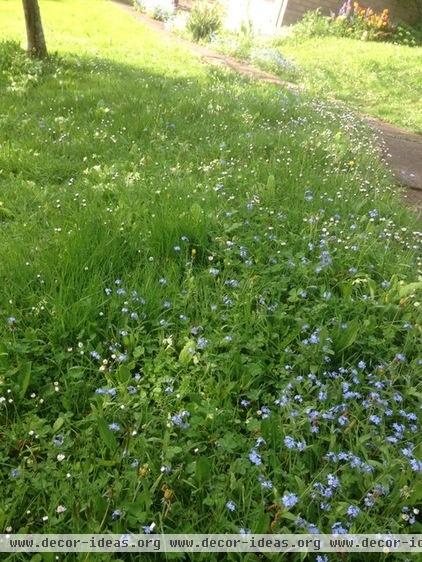
Benefits of a meadow lawn. The meadow lawn has a much lower maintenance requirement than both a conventional lawn or a wildflower meadow. Its requirements are flexible, and you don’t need to have a strict mowing regime.
Because of the mixture of natural plants, the meadow lawn supports a wide range of beneficial insects that will help with pest control in other areas of the garden and benefit the local fauna.
As opposed to a wildflower meadow, the meadow lawn gives color and interest through all periods of the year as the differing species of native plants flower, but also retains a viable lawn that will take moderate foot traffic and children’s games.
The mixture of native British spring-flowering wildflowers shown here — including primroses, Forget-me-nots and daisies — grow where they are happiest and spread where they want, but there is control; the grass is trimmed throughout the growing season. Primroses (Primula vulgaris) and their sister the cowslip (Primula veris) will happily grow in a meadow lawn as long as any mowing is held until flowering has finished.
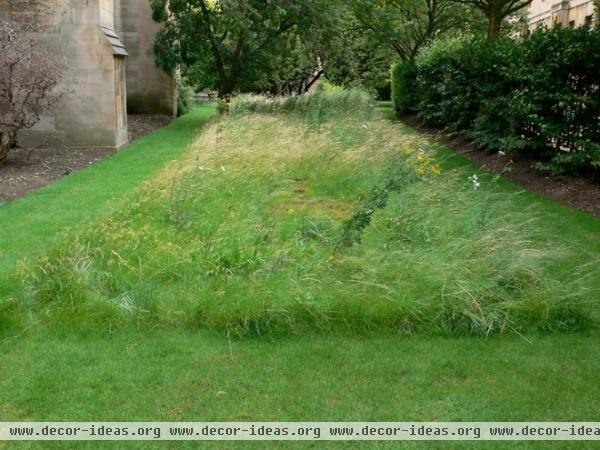
Creating a meadow lawn. There are three ways to create a meadow lawn:
Let wildflowers seed naturally.Sow wildflower seeds directly.Transplant full-grown plants.The first choice is the easiest; seeds are blown in or carried by birds and animals, but in urban areas it may be a slow process. Sowing and transplanting full-grown native plants can speed up the development of your meadow lawn.
Most wildflowers prefer soil conditions of low fertility, so the lawn should not be fed. Regular mowing and the removal of the clippings in the early stages of creating a meadow lawn will help reduce the vigor of the lawn and make it more suitable for wildflowers.
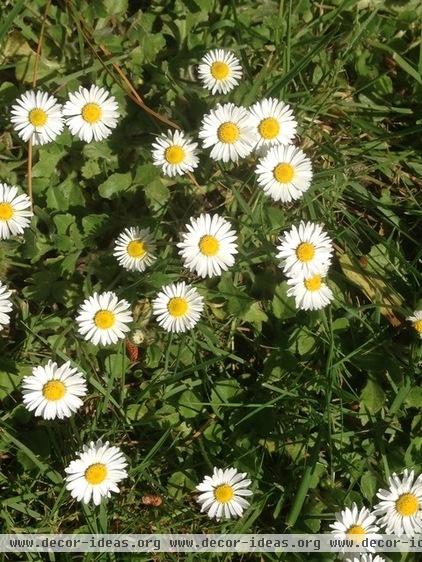
Some plants are easier than others to establish in an existing lawn. In British gardens the following are perfect for meadow lawns because most of them grow close to the ground and escape high-set mower blades. (Some may be considered invasive outside their natural European regions. Be sure to plant wildflowers native to your region.)
Daisies (Bellis perennis) can be the perfect low-growing perennial to inhabit lawns, as long as their mats of dark green foliage are not allowed to outgrow the rest of the plants.
The white flowers often get cropped during mowing but return in days to once again carpet the lawn.
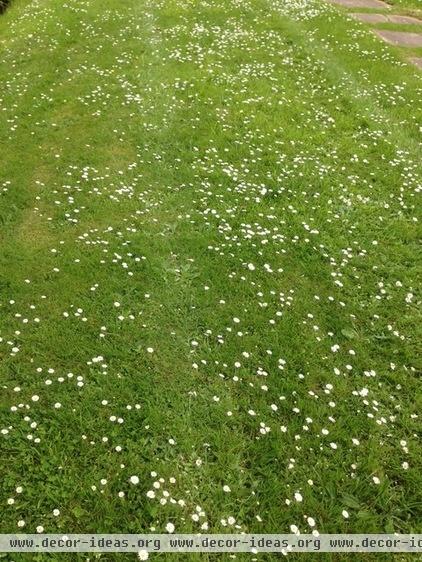
English, or lawn, daisies, loved by some and hated by others, are one of the first plants to colonize and set the basis for the meadow lawn. Daisies, like the ubiquitous dandelion and white cover, though lovely to look at, can overpower the more delicate flowers you are hoping to encourage.
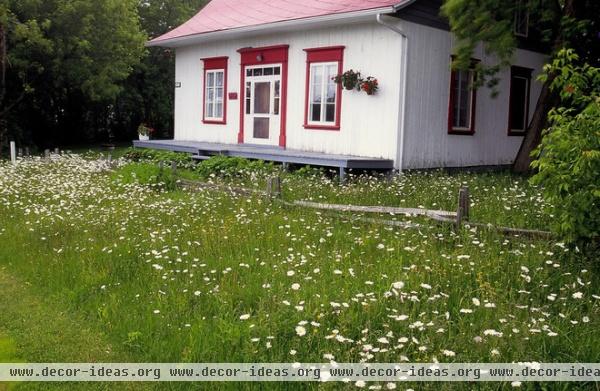
It’s not only the common daisy that makes a show when lawns are allowed more freedom. Here, oxeye daisies (Leucanthemum vulgare) have grown through as the grass has been left uncut to create the same feeling as their smaller cousins.
The following plants will survive a fairly regular mowing pattern during the summer months, with the mower blades set high enough to keep the grass tidy, while allowing low-growing wildflowers to flourish: Germander speedwell (Veronica chamaedrys), self-heal (Prunella vulgaris), birdsfoot-trefoil (Lotus corniculatus), bugle (Ajuga reptans), and lady’s smock (Cardamine pratensis).
More: Meet a Lawn Alternative That Works Wonders
Tell us: Have you converted to a mini meadow of your own? Please leave a comment about what you planted and how it’s working for you.












